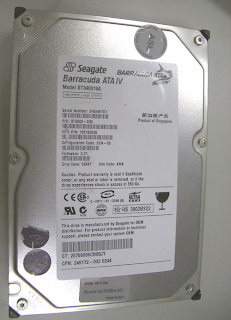Basic Computer Structure and Knowledge
By Shailesh Kushwaha - Monday, May 28, 2012
---------------------------------------------------------------------------
Basic Computer Structure
---------------------------------------------------------------------------
Logical Structure of a computer includes:
Basic Computer Structure
---------------------------------------------------------------------------
Logical Structure of a computer includes:
- BIOS (The Basic Input Output System)
- CPU (The Processor)
- Memory / RAM (Temporary Storage)
- Hard Disk (Permanent Storage)
- Input / Output Device
- Communication Channel (Eg. USB)
- Bus (High Speed Internal Communication)
- Other Add-on Device…
BIOS:
- Basic Input Output System
- Store all the parameter before the OS Load(Example are Hard Disk Size, MemorySpeed, Turn on or turn off the build in device such as Sound Card, USB, printer etc)
- Usually stored in Flash Memory
One of the BIOS Screen Dump:
Identify the Component - CPU:
- Central Processing Unit
- It is the core of a computer.
- Responsible for all the calculation and part of the video.
- Usually in the Speed of GHz
- 1G around 1,000 MHz
- 1M = 1Million Instruction / second
- Some Expensive CPU have more build in memory (Cache Memory)
How to Choose a CPU ?
- Mainly AMD / Intel Dominate the Market.
- In the current market you have several categories of microprocessors to choose for your desktop computers: Xeon, Pentium IV, Celeron, Dual Core, Quad Core, Athlon, and AMDX64 etc.
- Price vs. Performance: There is typically no good correlation between these two factors, especially at the top speeds. Average users should not purchase the top-speed on the market. The price difference is not worthy of the performance difference.
- Based on your budget, find a suitable CPU.
Memory / RAM :
RAM – Random Access Memory:
- Act as a temporary Storage.
- EDO > SDRAM > DDR > DDR2
- All data stored in memory are volatile. (Need electricity to keep the data)
- Memory Size is around 256M / 512M / 1G / 2G per memory module
- Basic Configuration is around 512M RAM
Hard Disk (ATA / SATA / SCSI) :
- Used to stored data permanently.
- Different Type of Hard Disk Size (3.5”, 2.5”, 1.8”, Micro Drive)
- Different Interface : ATA / SATA / SCSI (Speed : ATA < SATA < SCSI)
- Different Speed (Mechanical) (4,200rpm / 5,400rpm / 7,200rpm / 10,000 rpm )
- Different Build in Memory Size (2M / 8M / 16M etc)
- Different Capacity (80G to 500G or even 1T)
- Small Size Hard Disk are more popular as they are portable size.
Main Board / Mother Board (MB):
- Provide a platform to connecting all the devices. (Keyboard / Mouse / Power / CPU / Memory / Hard Disk Floppy Disk / Display Card etc)
- Many Main Board has already build in Sound Card / Network Card or even display card.
I/O Device & Interface:
- ATA / SATA /SCSI (For Hard Disk)
- Parallel Port or LPT Port (For Printer)
- COM Port (For Modem)
- RJ45 Socket (For Network)
- PS/2 (For Keyboard / Mouse)
- D-Sub / DVI (For Monitor)
- USB (All compatible device)
Power Supply:
- Power Supply Convert the A.C. Voltage to Lower D.C.Voltage which is suitable for Computer.
- Power Supply can be classified by their loading (Watt).
- Different type of socket for different device.
Case:
- Case is used to place the main board and the power supply.
- Most case have external USB connection.
Follow our blog on Twitter, become a fan on Facebook. Stay updated via RSS










0 comments for "Basic Computer Structure and Knowledge"